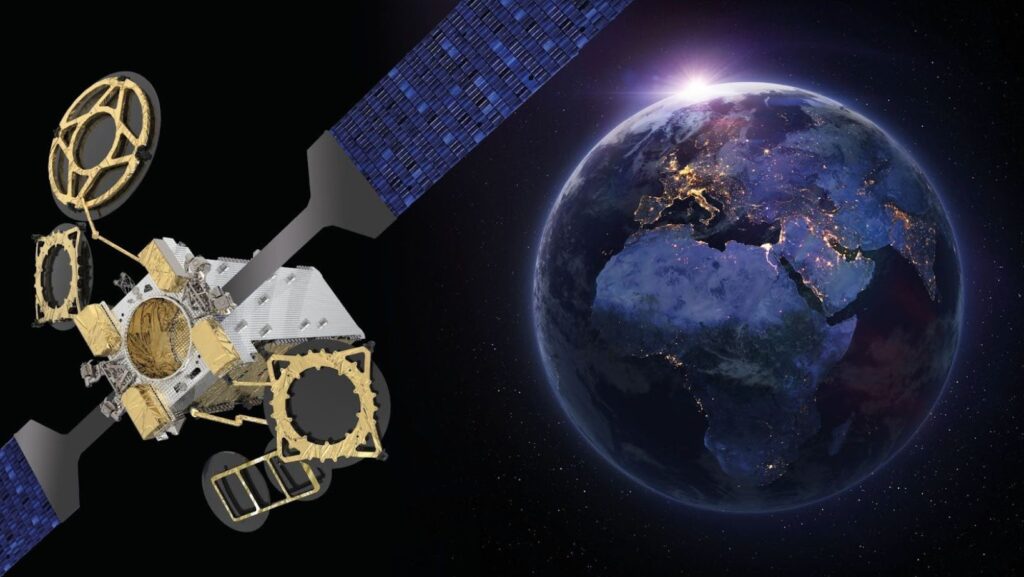We rely on satellites for so many routine tasks, from communication to itinerary planning, that a major disruption in satellite operations can cause utter chaos on Earth. Fortunately for us, the sheer chaos scenario is unlikely because satellite components are built to withstand the harsh environment of space. So, what are the problems with satellites in space? Below, we will explain the chief space hazards for man-made tech, starting with the basic facts about satellite components and their operation.
Major Satellite Components Explained
While the list of satellite components can be extensive, it primarily consists of the bus, or platform, and the payload. The bus encompasses essential components for spacecraft operation, including power sources, thermal regulations, communication antennae for ground stations, as well as orientation and propulsion systems. On the other hand, the payload is mission-specific and can vary from Earth-capturing cameras to chemical sensors designed for studying the composition of other celestial bodies within our solar system.
Starting from take-off, all satellite components and functions, including buses with essential equipment, payloads responsible for mission execution, and the outer coating designed to protect electronic components from space hazards, are susceptible to extreme cold, high radiation, and intense temperature fluctuations.
What Can Affect Satellites?
The journey of satellites and their crucial parts to their designated orbits involves a crucial phase known as the launch, where they must withstand potential malfunctions and intense vibrations that come with rocket liftoff. This makes the launch phase particularly challenging and critical.

When a satellite component gets detached from a rocket, it poses an additional danger as it triggers a vibration shock throughout the entire satellite body. This phenomenon is known as pyrotechnic shock, characterized by a dynamic wave comparable to a massive explosion.
If we assume that the launch and separation were successful, what occurs afterwards? In space, what elements impact the motion of satellites? Specifically, what factors influence the components of satellites and their functioning? Let’s explore this, beginning with the broad ones and then examining their effects on each component.
Recurring Problems of Satellite Components
Satellite components are gradually impacted by a number of recurring space hazards.
- In space, radiation exposure is a significant concern due to its highly radioactive nature. Unlike on Earth, where our atmosphere provides a protective shield against solar radiation and intense flares from our parent star, satellites are completely exposed to these hazardous elements. The level of radiation experienced by satellite components depends on their orbit and the solar cycle, ranging from minimum to maximum levels. Nonetheless, the continuous exposure to powerful radiation gradually deteriorates the materials of satellite components over time.
- In addition to radiation, the absence of an atmosphere poses another challenge known as thermal stress. The space environment experiences drastic temperature fluctuations, ranging from a bone-chilling -200°C to a scorching +200°C on the Moon, surpassing these extremes at times. Over time, this thermal stress causes fatigue and eventually leads to the failure of components.
- Micrometeoroids and Space Debris: another recurring hazard, especially in low-earth orbit (closest to us) that can cause significant damage due to regular impacts, even if they’re small. Besides, cases of collisions with large space debris are not unheard of. And while space agencies are working on initiatives to clean up our obit, we cannot discard natural debris, like dust particles floating at high speeds.
- In the vacuum of space, there is no atmospheric pressure, which poses a challenge for spacecraft components, particularly those coated in plastics. This is because all materials emit gases, and without wind to disperse them, the spacecraft becomes surrounded by its own toxic vapors. Certain materials, including plastics, tin, zinc, and cadmium, are not allowed in space due to their tendency to form crystalline structures known as ‘tin-whiskers’. These whiskers can grow on the spacecraft and compromise the integrity of its components.
- Vapour outgassing contamination frequently causes electrostatic discharge, which occurs as particles accumulate and become charged due to interactions with elements in the non-vacuum space. This discharge poses a significant risk to electronic components, leading to their damage.
All satellite components are particularly impacted by continuous exposure to these external pressures.
- Solar panels in power systems experience a reduction in efficiency due to the degradation caused by solar radiation. Additionally, the mechanical stress resulting from temperature fluctuations as a satellite transitions between sunlight and shade can impact their performance.
- Communication systems can be affected by space weather events like solar flares, leading to disruptions in communication signals that are directly experienced on Earth. Additionally, the regular encounters with debris can cause misalignment of antennas, ultimately impacting communication.
- Despite engineers’ efforts to design spacecraft components capable of withstanding high-temperature fluctuations, continuous exposure to extreme temperatures eventually leads to damage in these controls. Additionally, the impact of space debris can puncture thermal blankets and radiators, accelerating the inevitable deterioration.

In conclusion, the impact of high-energy solar particles on satellite memory can result in data corruption, while cosmic radiation frequently disrupts scientific sensors on research satellites. However, it is worth noting that satellite components have made significant progress and continue to advance alongside the growth of our space industry.
Major Problems Affecting Satellite Components in Outer Space

